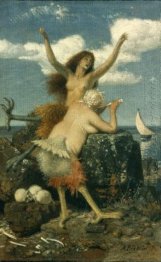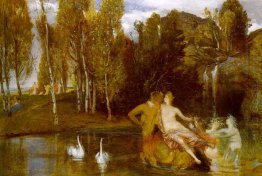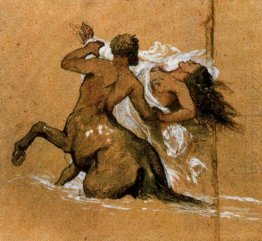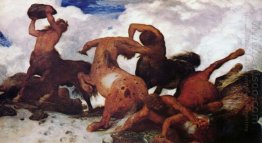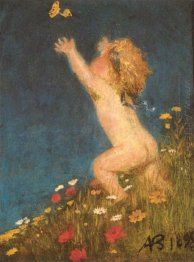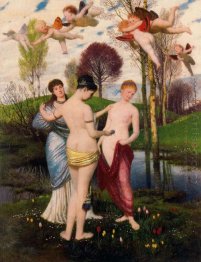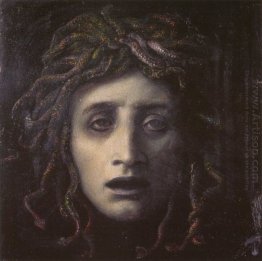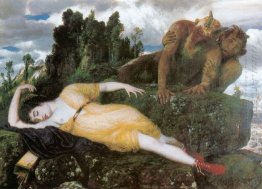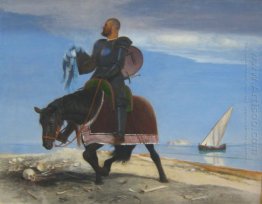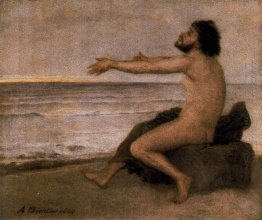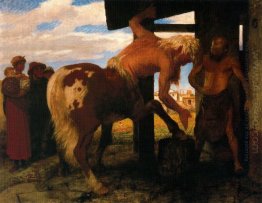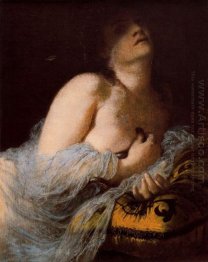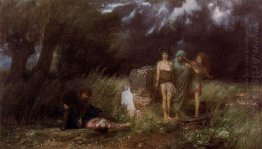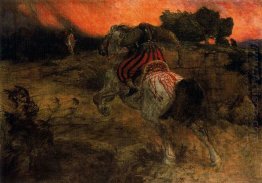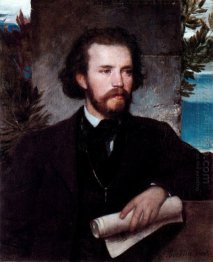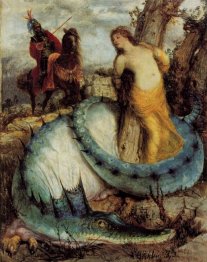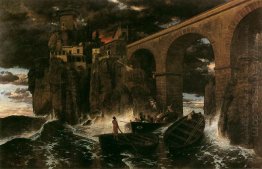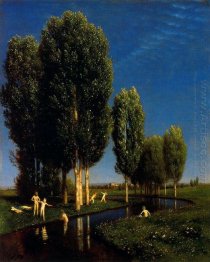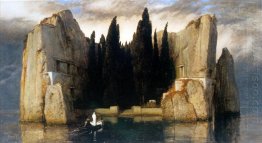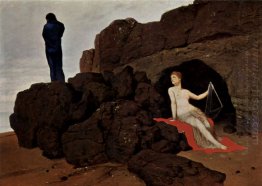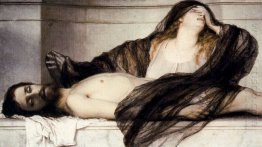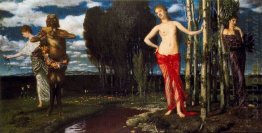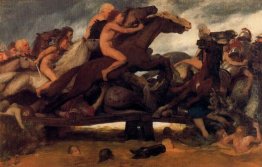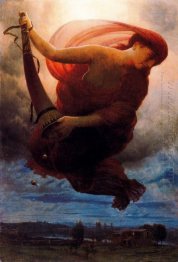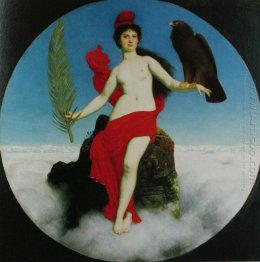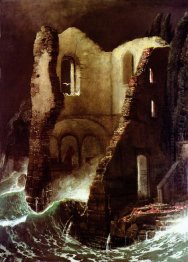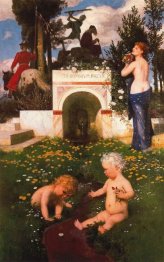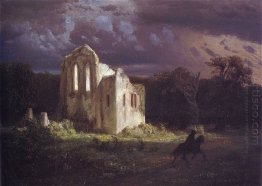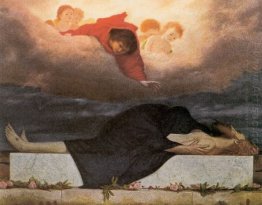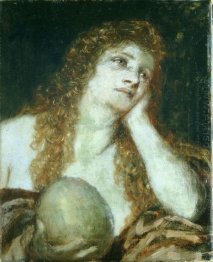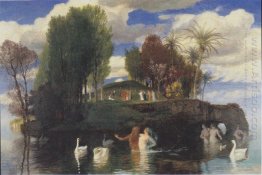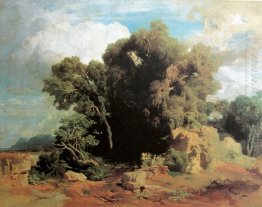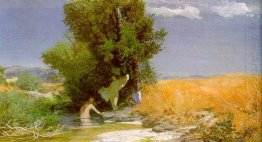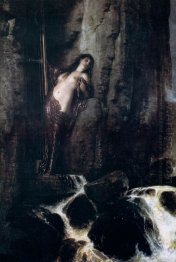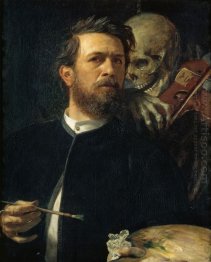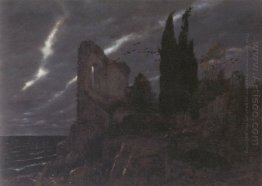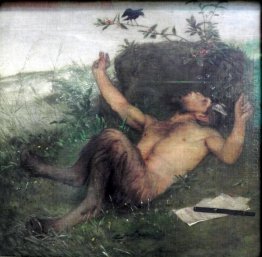Arnold B-cklin
Arnold B?cklin was a Swiss-German painter. He was one of the most celebrated and influential artists in central Europe, particularly Germany and Switzerland, in the later 19th century, notable for his imaginative and idiosyncratic interpretation of themes from Classical mythology.
He was born at Basel. His father, Christian Frederick B?cklin (b. 1802), was descended from an old family of Schaffhausen, and engaged in the silk trade. His mother, Ursula Lippe, was a native of the same city.[1] Arnold studied at the Düsseldorf academy under Schirmer,[1] and became a friend of Ludwig Andreas Feuerbach. He is associated with the Düsseldorf school of painting. Schirmer, who recognized in him a student of exceptional promise, sent him toAntwerp and Brussels, where he copied the works of Flemish and Dutch masters. B?cklin then went to Paris, worked at the Louvre, and painted several landscapes.
After serving his time in the army, B?cklin set out for Rome in March 1850. At Rome, he married Angela Rosa Lorenza Pascucci in 1853. The sight of the Eternal City was a fresh stimulus to his mind. So, too, was the influence of Italian nature and that of the dead pagan world. These new influences brought allegorical and mythological figures into his compositions. In 1856 he returned to Munich, and remained there for four years. He then exhibited the Great Park, one of his earliest works, in which he treated ancient mythology. Of this period, too, are his Nymph and Satyr, Heroic Landscape (Diana Hunting), both of 1858, and Sappho (1859). These works, which were much discussed, together with Lenbach's recommendation, gained him his appointment as professor at the Weimar academy. He held the office for two years, painting the Venus and Love, a Portrait of Lenbach, and a Saint Catherine.
He was again at Rome from 1862 to 1866, and there gave his fancy and his taste for violent colour free play in his Portrait of Mme B?cklin, and in An Anchorite in the Wilderness (1863), a Roman Tavern, and Villa on the Seashore (1864). He returned to Basel in 1866 to finish his frescoes in the gallery, and to paint, besides several portraits, The Magdalene with Christ (1868), Anacreon's Muse (1869), and A Castle and Warriors (1871). His Portrait of Myself, with Death playing a violin (1873), was painted after his return again to Munich, where he exhibited Battle of the Centaurs, Landscape with Moorish Horsemen and A Farm (1875). From 1876 to 1885 B?cklin was working at Florence, and painted a Pietà, Ulysses and Calypso, Prometheus, and the Sacred Grove.
From 1886 to 1892 he settled at Zürich. Of this period are the Naiads at Play, A Sea Idyll, and War. After 1892 B?cklin resided at San Domenico, near Florence.




